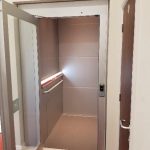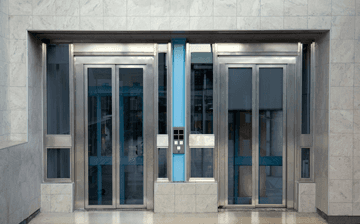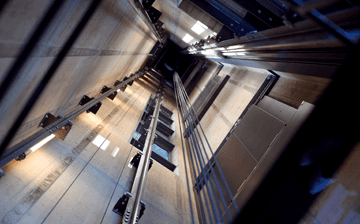 A reliable lift company in Warrington is the best way to provide safe access to all the floors in your building. Continue reading “Lift Company in Warrington Ensures the Safety of Your Building” »
A reliable lift company in Warrington is the best way to provide safe access to all the floors in your building. Continue reading “Lift Company in Warrington Ensures the Safety of Your Building” »


 A reliable lift company in Warrington is the best way to provide safe access to all the floors in your building. Continue reading “Lift Company in Warrington Ensures the Safety of Your Building” »
A reliable lift company in Warrington is the best way to provide safe access to all the floors in your building. Continue reading “Lift Company in Warrington Ensures the Safety of Your Building” »

 With our top-quality lift servicing in Bradford you can ensure the convenience, safety and comfort of your building’s occupants. Continue reading “Lift Servicing in Bradford, Ensure the Safety of the Occupants of Your Building” »
With our top-quality lift servicing in Bradford you can ensure the convenience, safety and comfort of your building’s occupants. Continue reading “Lift Servicing in Bradford, Ensure the Safety of the Occupants of Your Building” »


With space in urban areas becoming less available and more expensive, it’s natural that expansion becomes more vertical rather than horizontal. This means that access to such spaces forms an important aspect of building design.
With some of our cities having extremely tall buildings, access is possible only via a lift. We take lifts for granted in buildings that have more than a certain number of floors. Persons with disabilities require lifts to access their homes, work places and entertainment areas. The restaurant and hospitality industry and many other businesses that require transportation of goods and people on a large scale between different areas of operation and service have a vital need of modern, safe and efficient lifts.
The different types of lift include:
In some buildings, passenger lifts may be used to transport light goods below a certain weight and volume. For instance, in apartments and flats, passenger lifts may be used to transport furniture and luggage, while in office buildings, they may be used to transport office equipment and furniture between floors. Freight lifts and service lifts may be designated within the same building and their use has to be strictly enforced for the designated purpose only.
One of the most crucial aspects of installing lifts is their safety. In the UK, The Lifts Regulations Act 2016 applies to lifts installed permanently in buildings or constructions and their safety components. They apply to installers, manufacturers, authorised representatives, importers and distributors of lifts meant to be used in commercial and private buildings. Owners or operators of lifts have a legal obligation to stay in compliance with the current regulations. In the case of modernisation, it is important to ensure that the existing utility systems in the building are compliant with current safety code systems and are able to comfortably take the load of the new lift systems.

The main purpose of a lift survey is to inspect, diagnose, prepare and cost a suitable solution that can be provided to the client. The survey can be conducted in private residential buildings, commercial buildings, leisure and hospitality centres, retail outlets, and public areas.
There are several different aspects that have to be considered during the survey process when you want to install a new lift or upgrade your old system:
There are different types of lift surveys: one is a pre-acquisition survey to design and install a new lift and the other is to evaluate an existing lift system for safety, reliability, performance, and capacity or to upgrade, refurbish or modernise it.
Pre-Acquisition Survey: This is a project planning survey that helps to coordinate the lift infrastructure planning and design with facility, operational requirements, preferences and budget. It also includes client survey and traffic study to determine the type, size, service, speed, and capacity. This study also includes aspects of the building such as type, use, size, height, present and projected population, exterior considerations and space availability.
Safety/Performance Survey: Excessive noise, vibration, slow/fast speed, jarring stops, floor-levelling problems makes the lift unreliable and unsafe. The lift must be checked against the current standards, codes and legal requirements. Recommendations are given in this survey.
Maintenance Survey: Manufacturers and distributors offer maintenance contracts to ensure that the product performs well and remains safe. It’s important to ensure that these contracts are not given purely on the basis of a low quote. Maintenance audit reports help to create a system of documentation.
Modernisation/Upgrade/Refurbishment Survey: When older systems are unable to cope with new requirements, such surveys help to increase capacity, efficiency and performance.

At Motion Elevators, our team of highly trained, qualified and experienced professionals can conduct the requisite survey based on your unique requirements. We believe that the key to successful installation of top-quality lifts is a thorough and detailed professional lift survey.
We offer a Free Lift Site Survey conducted by one of our professional technicians that incorporates compliance with current regulations and standards along with the client specifications. The survey aims at enabling us to understand your specific requirements and also to evaluate the available options. Based on this, the survey helps us to take the process to the next level where we can advise you on the right kind of products to purchase and install. We take into account energy efficiency, auxiliary power operations, and emergency power options, to ensure that you get the most suitable product.
This survey is conducted by one of our highly experienced lift installation surveyors.
The process follows a step-by-step procedure:
We ensure that we provide a detailed report that will help you make an informed choice.

 If you are in need of someone to handle your Lift servicing in Stockport, then look no further than Motion Elevators to be of service, literally. Continue reading “Keep Your Building Safe with Regular Lift Servicing in Stockport” »
If you are in need of someone to handle your Lift servicing in Stockport, then look no further than Motion Elevators to be of service, literally. Continue reading “Keep Your Building Safe with Regular Lift Servicing in Stockport” »

Lifts have become an essential part of modern-day buildings. They are used to cover distant and time-consuming segments of a structure quickly. Research shows that 90% of people prefer to use a lift instead of stairs. The first skyscraper in Chicago was designed considering the availability of the mechanical lifts. Founders of the “Father of the Skyscrapers” knew that the mechanical lifts could ensure the movement between 138ft high ten stories. Otherwise, it would not have been technically feasible to populate such a tall edifice in the 19th century. However, these days it has become a common practice to install a lift in commercial and residential buildings for convenient movement of the people.

A lift is undoubtedly an essential part of any building these days. Many buildings either have lifts or the owners are planning for the installation, the selection of the right type of lift may seem confusing to some people. However, for the simplification of the selection process, let’s have a look at the common types of lifts.

You can choose a suitable lift for your building by keeping the following things in mind.
Every building has different purposes and traffic flow. A wrong selection of the lift can cause consequences for the users. For instance, a bed lift which is used to carry passengers on a bed is not useful in a shopping complex or an office. A detailed traffic analysis of the building can also help in determining the number of people.
The selected lift must fulfil the needs of the people who are going to use the lift service of your building. You must consider the following points during the need assessment of the passengers.
The points mentioned above are worth considering, and they would help you in determining the traffic flow of your building.
It is important to select a lift that is suitable for your building. A careful analysis of the structure of building with the expected flow of traffic can give an idea about the viability of different designs. Furthermore, you can also hire experts for calculating the analytical lift for the traffic flow of the goods or passengers at peak hours.

Choosing the right place for the installation is critical for the proper functioning of a lift. As a general rule of thumb, the lift must be easy to access for the users. By keeping the accessibility factor in mind, halls and corridors that work as the connecting point to the rest of the floor are reasonable locations. Furthermore, the space available for the installation is also an essential factor for the final installation of the lift. However, only experts can analyze the condition of the building and suggest the best location.
There are many kinds of lifts, but all of them may not fulfil your requirements. For example, a platform lift is the best option for the buildings and houses with limited space. Furthermore, you do not have to make significant alterations in the design of your building because a platform lift comes with its lift shaft, unlike a Passenger lift which requires a lift shaft in the building if one isn’t already in place.

Numbers of floors that the lift is going to cover are needed to be taken into account before choosing the category of the lift. For example, a platform lift travels slower between floors than a passenger lifts due to its design. If you want to cover more than three levels, the type of lift will play a critical role in determining the time taken for covering the floors. The slow-moving speed of the platform lifts may not suit the office of a multinational corporation, but it would work fine in a two-three story house or office building
Cost is a significant consideration when it comes to choosing the best lift for any place. For instance, Platform lifts are more cost-effective than Passenger lifts. Platform lift requires a minimal pit of 50mm underneath the lift or can be placed directly to the floor and have a small ramp for access and usually require less headroom (the measurement from the top floor landing to space above the elevator to the ceiling) in comparison to a Passenger lift. Passenger lifts may require a pit of 1200mm-1600mm underneath the lift, and you may need to make alterations in the existing design of your building. Adjustments created for the installation of the lift can add to the overall cost of the lift.
Lifts are safe for vertical travelling. According to the Health and Safety Executive report, fatalities caused by the elevators were not included in the top 10 reasons for deaths in 2014-19. The right type of lift with security measures can reduce the chances of any unfortunate event to null. Life Insurance research also validates that merely 1 in 10,440,000 are likely to face a fatal injury in a lift. Always take expert help for determining the best lift type for your building.
Speak to Motion Elevators today for guidance on the right lift product for your requirements.

 You will need regular lift servicing in Sheffield if your building has an elevator or two. Continue reading “Use a Professional Company for Thorough Lift Servicing in Sheffield” »
You will need regular lift servicing in Sheffield if your building has an elevator or two. Continue reading “Use a Professional Company for Thorough Lift Servicing in Sheffield” »

 Lift servicing in Huddersfield is mandatory but you do have choices regarding your maintenance program. Continue reading “Professional Lift Servicing in Huddersfield for Smooth Running Lifts” »
Lift servicing in Huddersfield is mandatory but you do have choices regarding your maintenance program. Continue reading “Professional Lift Servicing in Huddersfield for Smooth Running Lifts” »

 Whatever type of lift servicing in Cheshire you need, we’re well equipped to undertake it all. Continue reading “Lift Servicing in Cheshire” »
Whatever type of lift servicing in Cheshire you need, we’re well equipped to undertake it all. Continue reading “Lift Servicing in Cheshire” »

 To ensure safety and compliance, lift servicing in Sheffield buildings is required. Continue reading “Lift Servicing in Sheffield” »
To ensure safety and compliance, lift servicing in Sheffield buildings is required. Continue reading “Lift Servicing in Sheffield” »

 All machinery needs to be routinely maintained and lift servicing in Southport is vital for a lift that will remain safe, reliable and efficient. Continue reading “Lift Servicing in Southport” »
All machinery needs to be routinely maintained and lift servicing in Southport is vital for a lift that will remain safe, reliable and efficient. Continue reading “Lift Servicing in Southport” »